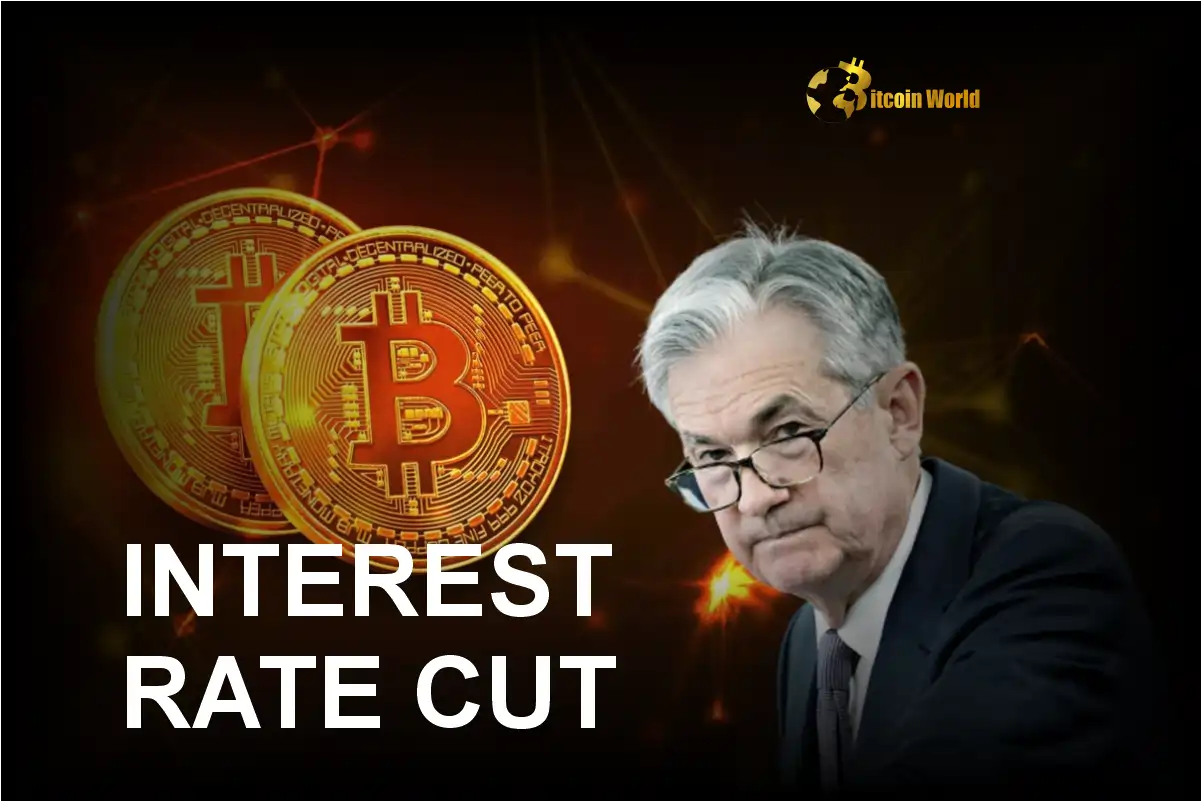Buckle up, crypto enthusiasts! The latest buzz from the U.S. Commerce Secretary Howard Lutnick suggests a significant shift in the economic landscape that could send ripples through the digital asset realm. Lutnick’s bold pronouncements about impending interest rate cuts and the ineffectiveness of tariff retaliation are not just Wall Street whispers; they’re potential catalysts for the next crypto market surge. Let’s dive into what this means for your crypto portfolio and the broader economic picture.
Why Interest Rate Cuts Could Supercharge the Crypto Market
When the U.S. Commerce Secretary Howard Lutnick states that interest rates are poised to fall “significantly,” it’s more than just economic commentary; it’s a potential green light for risk assets like cryptocurrencies. Lower interest rates essentially make borrowing cheaper and reduce the returns on traditionally safer investments like bonds. This scenario often leads investors to seek higher-yield opportunities, and where better to look than the dynamic and potentially lucrative crypto market?
Here’s how interest rate cuts can act as rocket fuel for crypto:
- Increased Liquidity: Lower borrowing costs mean more money circulating in the economy. A portion of this increased liquidity often finds its way into investment avenues, including the high-growth potential of cryptocurrencies.
- Reduced Opportunity Cost: When traditional savings accounts and bonds offer meager returns due to low interest rates, the allure of higher-yielding assets like Bitcoin, Ethereum, and altcoins becomes significantly stronger. Investors are incentivized to move funds into crypto to seek better returns.
- Weakened Dollar (Potentially): Interest rate cuts can sometimes weaken the U.S. dollar relative to other currencies. While complex, a weaker dollar can, in some cases, make dollar-denominated assets like Bitcoin more attractive to international investors as they become relatively cheaper.
- Risk-On Sentiment: Lower rates generally foster a “risk-on” environment. Investors become more comfortable taking on riskier investments in pursuit of higher returns. Cryptocurrencies, known for their volatility and high potential rewards, often thrive in such environments.
Tariff Retaliation: An Ineffective Tool in the Current Economic Climate?
Secretary Lutnick’s assertion that tariff retaliation against U.S. tariff policies would be “ineffective” is another crucial piece of the puzzle. While tariffs themselves can create economic uncertainty, his statement suggests a potential resilience in the face of trade tensions. Let’s unpack why this matters in the context of the global economy and, indirectly, the crypto market.
Here’s a breakdown of why tariff retaliation might be losing its sting:
- Globalized Supply Chains: Modern economies are interconnected. Tariffs aimed at one country often impact multiple nations due to complex global supply chains. Retaliation can become a tangled web, hurting everyone involved, including the retaliating country itself.
- Limited Impact on US Economy (Potentially): The U.S. economy, while not immune, might be less vulnerable to targeted retaliation than some anticipate, especially if domestic demand remains strong. This perceived resilience could embolden the U.S. in its tariff policies.
- Focus on Domestic Growth: If the U.S. administration believes tariff retaliation is ineffective, it might signal a stronger focus on domestic economic policies, including, potentially, the aforementioned interest rate cuts, to stimulate growth from within.
- Shifting Trade Dynamics: The global trade landscape is constantly evolving. Countries are seeking new trade partners and diversifying their supply chains. Traditional retaliatory tariff measures might be less impactful in this fluid environment.
Economic Impact: Navigating the Uncertainties and Opportunities
The interplay of falling interest rates and potentially ineffective tariff retaliation creates a complex economic landscape. For the crypto market, this could translate into both opportunities and challenges.
Potential Benefits for Crypto:
- Increased Investment Flows: As discussed, lower interest rates can drive more investment into crypto assets.
- Hedge Against Economic Uncertainty: In times of economic uncertainty, including trade tensions and fluctuating interest rates, some investors view cryptocurrencies like Bitcoin as a hedge against traditional market volatility and currency devaluation.
- Innovation and Adoption: A favorable economic environment, fueled by lower rates, can spur innovation and further adoption of blockchain technology and cryptocurrencies.
Potential Challenges to Consider:
- Regulatory Scrutiny: Increased crypto market activity might attract greater regulatory attention, potentially leading to stricter rules and compliance requirements.
- Volatility Remains: While lower rates can be a tailwind, the crypto market remains inherently volatile. External economic shocks, unexpected policy changes, or market sentiment shifts can still trigger significant price swings.
- Inflationary Pressures: While not immediately indicated, aggressive interest rate cuts could, in the long run, contribute to inflationary pressures. How cryptocurrencies perform in a high-inflation environment is still a subject of ongoing debate and observation.
Actionable Insights: What Should Crypto Investors Do Now?
So, what are the actionable takeaways for crypto investors in light of these developments?
- Stay Informed: Keep a close watch on macroeconomic indicators, especially interest rate announcements and trade policy updates. News from the U.S. Federal Reserve and statements from officials like the Commerce Secretary are crucial.
- Diversify Your Portfolio: Don’t put all your eggs in one basket. Diversify your crypto holdings across different types of cryptocurrencies and consider a balanced portfolio that includes both established coins and promising altcoins.
- Risk Management is Key: Understand your risk tolerance. The crypto market is volatile. Implement sound risk management strategies, such as setting stop-loss orders and only investing what you can afford to lose.
- Long-Term Perspective: While short-term market fluctuations are inevitable, maintain a long-term perspective on your crypto investments. Focus on the fundamental value and long-term potential of the projects you invest in.
- Seek Expert Advice: If you’re unsure, consider consulting with a financial advisor who understands the crypto market. They can provide personalized guidance based on your financial situation and investment goals.
Conclusion: Navigating the Promising Yet Complex Crypto Landscape
Secretary Lutnick’s pronouncements paint a potentially bullish picture for the crypto market, fueled by anticipated interest rate cuts and a perceived resilience to tariff retaliation. However, the crypto landscape is never without its complexities and uncertainties. By staying informed, managing risk wisely, and maintaining a long-term perspective, crypto investors can navigate these dynamic times and potentially capitalize on the opportunities that lie ahead. The confluence of economic factors suggests a fascinating period for digital assets, demanding both vigilance and strategic action.
To learn more about the latest crypto market trends, explore our article on key developments shaping Bitcoin price action.






